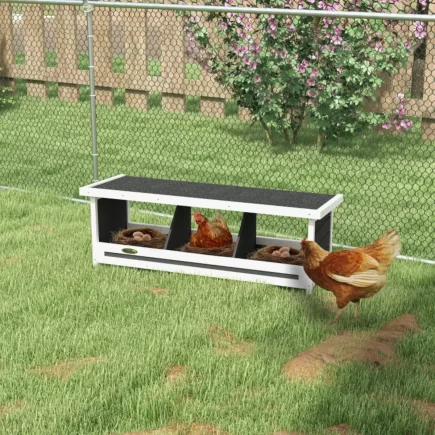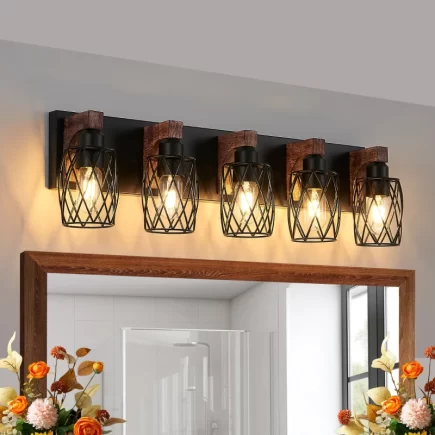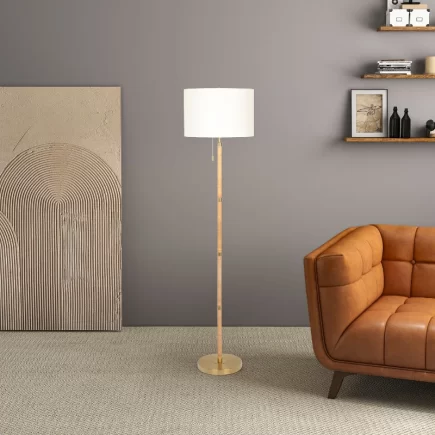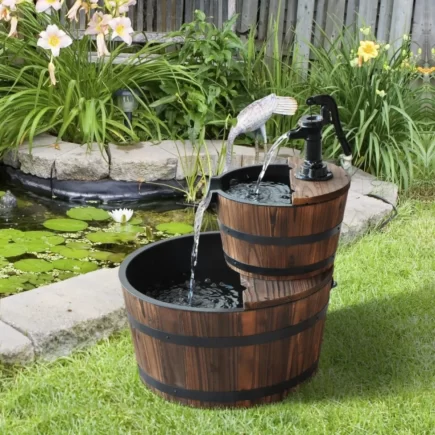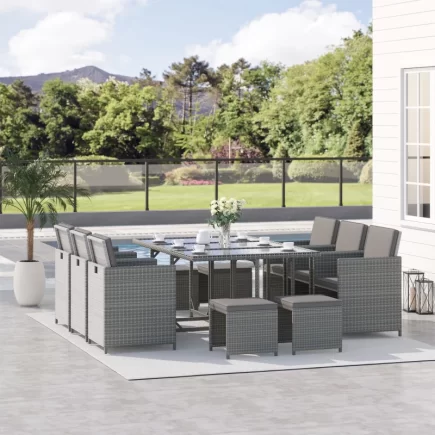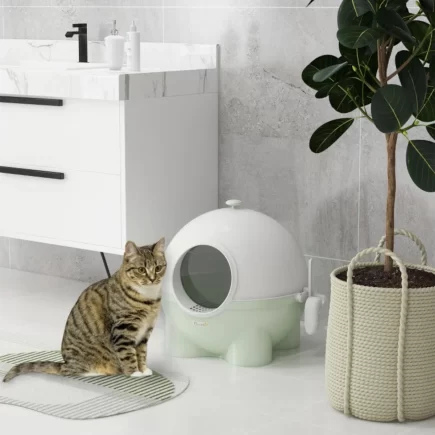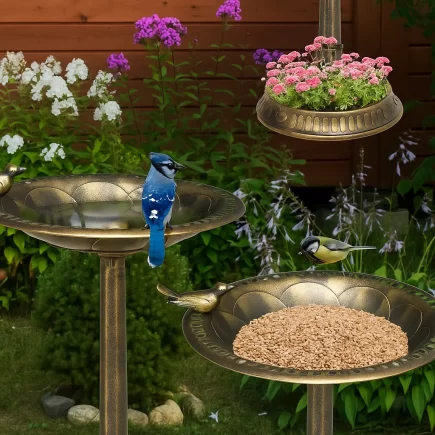An indoor metal plant stand is more than just a piece of furniture. It’s a decorative accent that ties your space together. Over time, though, metal stands can lose their shine. They may look dull, develop rust spots, or no longer match the style of your home. Painting your indoor metal plant stand is one of the easiest and most affordable ways to breathe new life into it.

Whether you’re trying to match your plant stand to a new room design, experimenting with bold colors, or simply extending its lifespan, learning how to paint it properly ensures long-lasting results. A fresh coat of paint not only improves appearance but also adds a protective layer that prevents future wear and rust.
Tools, Materials, and Safety Essentials
Before starting, gather all the tools and protective gear you’ll need. Being fully prepared will make the project easier and prevent interruptions midway.
Tools and Materials Checklist
| Item | Purpose | Notes |
| Sandpaper (medium & fine grit) | Smooth the surface and remove rust | Use 120–220 grit for best results |
| Wire brush | Scrape off rust and flaking paint | Effective on stubborn spots |
| Damp cloth | Clean dust and debris | Lint-free preferred |
| Metal primer | Ensures paint adhesion and prevents rust | Rust-inhibiting primer recommended |
| Paint | Provides color and finish | Enamel, acrylic, or spray paint for metal |
| Paintbrushes or spray cans | Apply paint evenly | Choose based on finish desired |
| Drop cloth or plastic sheeting | Protects the floor and furniture | Old newspapers work too |
| Painter’s tape | Masks areas not to be painted | Optional but useful |

Safety Gear for Indoor Painting
- Gloves to protect your hands from chemicals and paint.
- Mask or respirator to avoid inhaling paint fumes.
- Safety glasses if sanding heavily.
- Ventilation plan: open windows, use fans, or paint in a space with good airflow.
Step 1: Prepare the Work Area
Choosing the right workspace helps ensure success. A cluttered or poorly ventilated area can make the project messy and uncomfortable. Select a room with open windows, or use a garage with the door open to allow fumes to escape.
Before starting, lay down drop cloths or plastic sheets to protect your flooring and furniture from paint splatters. Even a light mist of spray paint can travel farther than expected. Finally, arrange your tools and materials in one spot so you don’t have to pause during painting. A well-prepared work area will save you time and frustration.

Step 2: Clean the Plant Stand Thoroughly
A clean surface is the foundation of a lasting paint job. Any dirt, grease, or cobwebs left behind will interfere with paint adhesion.
Dusting and Wiping Surfaces
Start by wiping the stand with a dry cloth, focusing on corners and joints where dust collects. This removes loose debris that could mix with paint and create a rough texture.

Washing with Soap and Water
For deeper cleaning, mix warm water with dish soap and gently scrub the surfaces. Be thorough, especially in decorative areas where grime hides. Rinse off the soap with clean water.
Step 3: Remove Rust and Old Paint
Rust weakens the metal and causes paint to flake if left untreated. Address it early to guarantee smooth, even coverage.
Using a Wire Brush on Rust Patches
Scrub lightly rusted areas in circular motions until bare metal shows through. This exposes a clean surface for the primer.

Sanding Away Loose Paint
Flaking paint should be sanded with 120-grit sandpaper until the edges are smooth. This prevents visible ridges under new paint.
Treating Stubborn Rust with Remover
For deep corrosion, apply rust remover gel and follow product instructions. Once the rust loosens, sand again until the surface feels even. This step helps prevent rust from reappearing under your new coat of paint.
Step 4: Sand for Better Adhesion
Even if rust isn’t an issue, sanding is still essential.
Selecting the Right Sandpaper Grit
Begin with medium grit to roughen the surface, which allows primer to grip better. Switch to fine grit (around 220) for a smoother finish.
Creating a Smooth, Even Finish
Cover the entire stand with steady, light sanding strokes. Avoid pressing too hard, which may scratch the metal. Your goal is a uniform surface that feels consistent to the touch.
Cleaning Off Sanding Dust
Once finished, wipe down the stand with a damp cloth to remove fine dust. Leaving residue behind may cause bumps in the paint finish.
Step 5: Apply a Metal Primer
Primer ensures your paint bonds properly and adds extra protection against rust.
Choosing a Rust-Inhibiting Primer
Select a primer labeled for metal use. A rust-inhibiting formula works best for extending the lifespan of your metal plant stand.
Applying Primer Evenly
Spray in overlapping strokes about 8–12 inches away from the stand. If brushing, use long strokes in one direction. Avoid heavy coats, which can drip.

Allowing Primer to Dry Fully
Give the primer at least 1–2 hours to dry, or longer if recommended by the manufacturer. Rushing this step may weaken the paint adhesion.
Step 6: Apply the Paint Correctly
This is where your stand truly transforms.
Spray Painting vs Brush Painting
Spray painting works well for intricate designs, delivering a streak-free finish. Brushes give you control on flat surfaces but require care to avoid visible strokes.
Applying Thin, Even Coats
Thin layers are the key to durability. Apply 2–3 light coats, allowing drying time in between. Avoid applying thick paint that could drip or crack later.
Recommended Number of Coats for Durability
At least two coats are needed for coverage, though three coats create the strongest finish. Let each coat dry for 30–60 minutes before adding the next.
Step 7: Drying and Curing the Paint
Paint that feels dry isn’t always cured.
Drying Times Between Coats
Paint usually dries to the touch within a few hours, but wait before adding more layers. Giving each coat proper time prevents tackiness.
Full Curing for Long-Lasting Results
True curing takes 24–48 hours. Don’t place plants or decorations back on the stand until it hardens completely. This ensures maximum protection against scratches and chips.
Design and Style Inspiration
Painting also allows you to personalize your stand to match your home’s theme. Neutral tones like black, white, or gray create a timeless look that suits most rooms. Bold colors such as teal, mustard, or red can make your plant stand a centerpiece. Metallic finishes like gold or bronze add elegance, while distressed or textured styles give a rustic, vintage vibe. Experimenting with finishes is an easy way to blend utility with style.

Troubleshooting Common Painting Issues
| Issue | Cause | Solution |
| Drips | Too much paint applied at once | Sand lightly and reapply thin coats |
| Streaks | Uneven brushing | Use smoother strokes or switch to spray paint |
| Uneven coverage | Missed spots | Add another coat for uniform results |
| Peeling | Inadequate surface prep | Sand, clean, and repaint |
These issues are common, but most can be fixed quickly if you catch them early. Always check your work as each layer dries.
Maintenance and Touch-Up Tips
Keeping your stand looking new requires occasional care. Dust it regularly with a soft cloth and avoid harsh cleaners that may damage the paint. If you notice scratches, touch them up with leftover paint stored in a sealed container. Every few years, consider recoating the entire stand to refresh its look. Small efforts in maintenance will ensure your painted plant stand continues to look stylish and function beautifully.
Painting an Indoor Metal Plant stand is a rewarding DIY project that blends practicality with creativity. By cleaning, sanding, priming, and painting carefully, you’ll achieve a finish that lasts for years. Beyond durability, the color and style you choose will transform your plant stand into a personalized design piece.
FAQs
1. Is spray paint more durable than brush paint on metal?
Durability depends more on surface prep and paint quality than the method. Spray paint gives smoother coverage on intricate designs, while brush paint is easier to control on flat areas.
2. Can I use chalk paint on a metal plant stand?
Yes, chalk paint can be applied to metal surfaces, but it works best with a primer underneath. It gives a matte, rustic finish, though it may require a topcoat for durability.
3. How do I fix scratches on a painted plant stand later?
Light scratches can be buffed gently and touched up with leftover paint. For deeper scratches, sand the area slightly, reapply primer if needed, and repaint for a seamless finish.
4. How do I protect my floor and walls if I only have a small space?
In small spaces, use a large drop cloth that extends several feet beyond the stand. Painter’s tape along baseboards and plastic sheets on nearby walls help contain overspray and drips.

